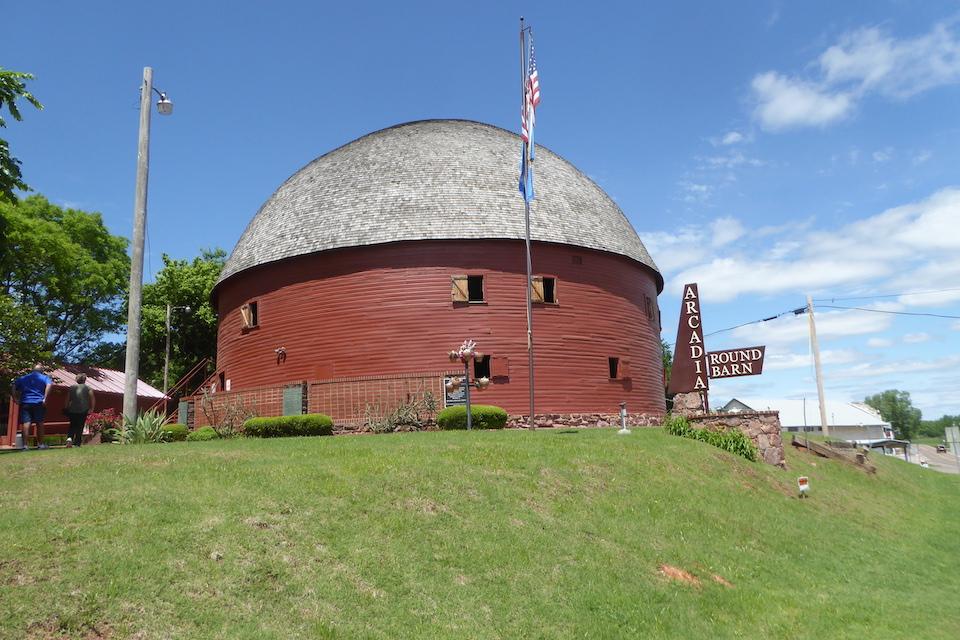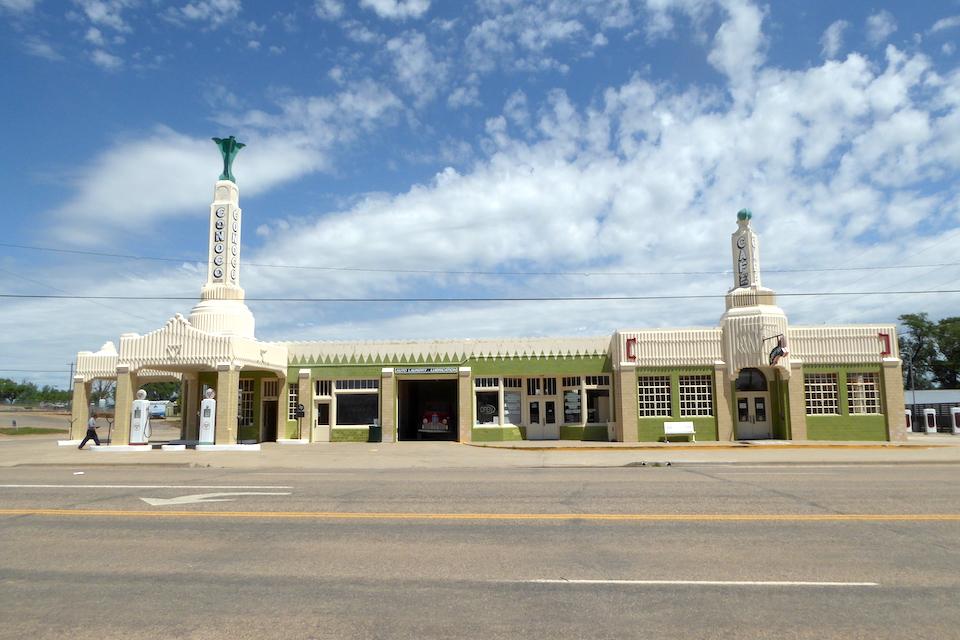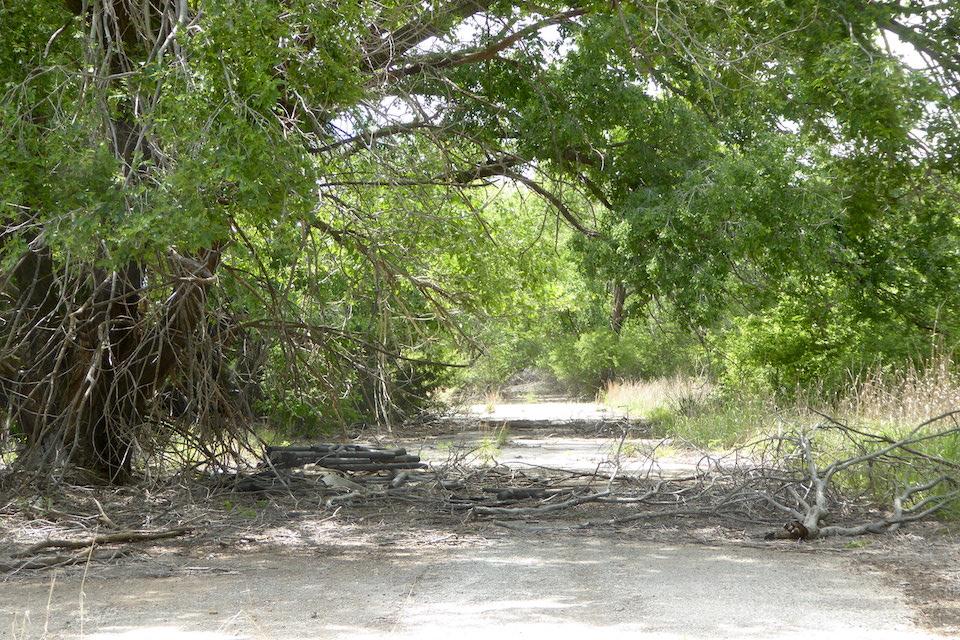
The Arcadia Round Barn in Arcadia, Oklahoma on Route 66/David and Kay Scott
On February 1, 2017, Illinois U.S. Representative Darin LaHood introduced H.R. 801, legislation that would amend the National Trails System Act to designate U.S. Route 66 as a National Historic Trail. The legislation would include all the alignments of U.S. Highway 66 - and there were many - in existence between the year the highway was launched in 1926 and its decommissioning in 1985. If enacted, Route 66 would join the Oregon Trail, Pony Express Trail, Trail of Tears, and 16 other trails designated as National Historic Trails. All but two of the 19 are administered by the National Park Service.
LaHood’s legislation, which passed the House of Representatives on a voice vote June 5, 2018, included 21 co-sponsors, all but one of whom represent one of the eight states (Illinois, Missouri, Kansas, Oklahoma, Texas, New Mexico, Arizona, and California) through which Route 66 passes. A similar proposal has been introduced as Senate bill 3609 in the upper chamber by Sens. Tom Udall of New Mexico and Jim Inhofe of Oklahoma.
The National Park Service is currently engaged with Route 66 through the NPS Corridor Preservation Program that provides cost-share grants for preservation of buildings, road segments, and cultural landscapes. It also offers assistance with research, planning, and more. Properties eligible for grants must have been in service on Route 66 during the period the road was commissioned as a U.S. highway.
Individual grant amounts under the Corridor Preservation Program have been nominal. For example, the Park Service provided matching grants of $10,500 (2005) and $21,000 (2011) for restoration of the Round Barn in Arcadia, Oklahoma. The barn was constructed in 1898 and is one of the best-known and most-photographed landmarks along Route 66. In 2012, a matching grant of $23,361 was awarded for façade restoration of the Circle Cinema, the only pre-1960s theater remaining in Tulsa.

Tower Station and the U-Drop In Cafe on Route 66 in Shamrock, Texas, is now owned by the city and operates as a visitor center/David and Kay Scott
The Corridor Preservation Program was initiated in 1999 as a 10-year seed platform. Funds originate from annual congressional appropriations with individual grants requiring at least a 50 percent applicant match. Grants are available for both individuals and nonprofits. The program was renewed for an additional ten years in 2009, but is scheduled to expire this coming October.
Designating Route 66 a National Historic Trail would provide financial and planning assistance lost from termination of the corridor program. It would also impart an official stamp of approval on the “Main Street of America" as a significant part of our country’s history.
The Congressional Budget Office estimates designating Route 66 as a National Historic Trail would cost approximately $2 million for years 2019 through 2023. This includes developing a management plan and establishing an advisory council.
It’s likely some Traveler readers are of the opinion that Route 66 doesn’t deserve status as a National Historical Trail. That it doesn’t measure up to the trail hundreds of pioneers used to reach the Pacific Northwest, or the route taken to carry mail via horseback to California. For doubters, consider that the national trails program is designed to “recognize original trails or routes of travel of national historic significance including past routes of exploration, migration, and military action."
There is little question Route 66 checks the box for past migration. For years it has served as a route of exploration for thousands of travelers, including a surprising number of foreign visitors, who view driving the Mother Road as an exciting way to experience the best of America’s past. In any case, when is the last time you heard a hit song about the joy of following the Pony Express Trail?
Over the years we have traveled much of Route 66. In 2018 it was following the Mother Road across New Mexico. We have driven what we consider the best stretch of the highway – a beautiful and desolate section between Needles, California, and Kingman, Arizona, on several occasions.
In May we spent most of a week driving Route 66 from Missouri to Texas. That trip included traveling a portion of the original 9-foot wide “ribbon road” in Oklahoma between Miami and Afton. Also called “the sidewalk highway,” the “ribbon road” was constructed before becoming part of Route 66 when the national highway was launched in 1926. At “Lucille’s Place” on Route 66 outside Hydro, Oklahoma, we stopped there to talk with a 32-year-old fellow who was pedaling to Santa Monica, California. The former service station had been operated for 60 years by Lucille Harmons, who lived upstairs. Lucille was known as the “Mother of the Mother Road.”
Each of our Route 66 journeys involved encounters with travelers who were excited about driving the Mother Road. A fellow we met at the 1960s Ku-Ku Burger restaurant in Miami, Oklahoma, had driven Route 66 once before, but this time he was without his wife, who had decided to stay home. His old VW van was covered with Route 66 paintings, while the interior was decked out with Route 66 pillows, seats, curtains, and more. What a great national historic trail Route 66 already is. Why not make it official?
David and Kay Scott are authors of “Complete Guide to the National Park Lodges” (Globe Pequot). Visit them at mypages.valdosta.edu/dlscott/Scott.html.

An abandoned stretch of Route 66 in western Oklahoma/David and Kay Scott



Comments
Please designate Rt.66 as a National Historic Trail. It is part of America's history and deserves the recognition and protection!
Great memories of a childhood trip down Route 66 with my parents in 1964, starting in Rolla MO & finishing in AZ. We'd buy & install a state window decal for every state we drove through, as well as the Grand Canyon, Painted Desert, etc. I hope the historic designation is passed by Congress.
If this passed, would it restrict or limit building projects as does the National Hisotrical homes requirement?
Mary Lee, this does not restrict or limit building projects. Almost all of Route 66 resources, with only a few small sections are owned and managed by the states, local governments and private owners. Participation in the National Historic Trail is voluntary. The bill would allow the NPS to work cooperatively with resource owners to promote and protect the route under the authorities of the National Trails System Act. The Act also authorizes the NPS to provide technical assistance and limited financial assistance to resource owners.
As it turns out, legislation to add Route 66 as a National Historic Trail as part of the National Trails System stalled in the U.S. Senate. My understanding is the entire process would have to begin anew.
Anything that can be done to keep Route 66 alive is welcome. Our family will do it next year and I very excited about it. It will be a road trip to remember...
My wife and I have driven the section between Albuquerque and St Louis twice in the past few years and are anxious to go again. Great scenery and a glimpse of the real America during the 1920's, 1930's and later but with comfortble, modern amenities for food and lodging. Route 66 is roadtrip heaven. Get a guide book or smart phone app, fill the tank and take some time to see the sights - unique, kitchy and entertaining. Enjoy the ride!
National Historic Trail designation would be wonderful - sorry to hear it may stalled ... again. Keep trying.